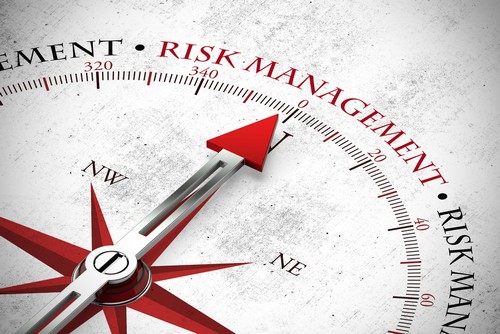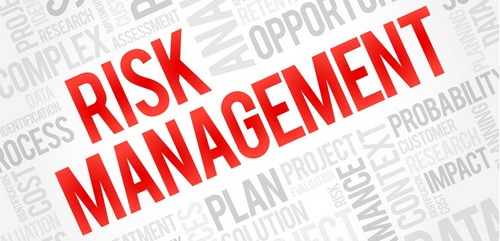The term risk management is used to refer to the identification, the polarization and the analysis of the threats or risks that may affect the capitals and earnings of any particular organization.
This is then followed by the economic and coordinated applications of the resources in order to minimize, control and monitors the impact of any unforeseen events or to maximize the opportunities’ realization.
Table of Contents
What is risk management?
Risk management is basically a process in which anything that may act as a threat or a risk to the organization is identified, analyzed, evaluated on several factors so that it can be eluded. These risks can arise due to several aspects like financial uncertainty, strategic management factors, legal liabilities, accidents, and natural disasters, etc.
Risks management is also done while making an important investment decision in which the identification, analysis and acceptance or mitigation of uncertainty in investment is done. Risk management is a practice of analyzing potential risks ahead of time.
After that those risks are evaluated on the basis of several factors and finally some precautionary steps are taken so that the risks could be reduced.
The risk management is associated with managing any type of possible risks in a portfolio and then reducing it through diversification. Now in a business one can inculcate many different types of risk especially in the investing world.
Now some of these may include economic factors, competition, and market volatility. Now the entities may also become a factor like in term so their position, their capital, in terms of the risks investment, etc.
For an instance, suppose there is a company say ‘ABC’ which has, say $10,000 in the form of their assets, here the analysis of the risk management will yield the fact that ‘it will not be a wise decision for the organization or the commonly to invest more than $5000 in a stock which is highly volatile.
It is quite essential for the organizations which are into businesses, to assess their risk on a daily basis. Most often it is common for any business to refer back t their previously done risks analysis so that they can decide the type of securities they would be wanting to purchase it or the type of ventures that they will want to invest in also the risks management issued in cases in which the companies are considering to launch some kind of their product line in future or factory expansion.
With the help of risk management, they are able to assess the level of threat of investment before launching the product.
Now in the financial world, risk management occurs everywhere. Mostly it occurs when the low risks bonds are being bought by the investor instead of the riskier corporate bonds. Now many of the financial instruments like ‘options’ or ‘futures’ or ‘money managers’ tend t use the strategies, for example, a portfolio or an investment diversification. This is done so that the risk could be mitigated or managed in an effective manner.
Now with the risk management is done in an inadequate way, it can then result in severe consequences which may affect the organization or a business or an individual or the economy.
Examples of risks management
Suppose there is an individual named ‘John’. And it has been 5 years now since he first started his company and now it has grown substantially and the asset has $40,000. Now along with with with that, John also considers investing in stocks from Apple but insurance of the amount that he should invest.
On top of it all, the prices of the stock is also high thus in the short term, any potential dividends would be extremely limited. Therefore he decides to go for a risk analysis so that he can make the best investment decision according to his situation.
After the risk assessment, it was revealed that investing in the stocks of Apple would be very risky for those who are new in the investing world in the present scenario. And in addition to it, the prices of the stock is also quite high thus making it extremely limited for any potential dividends in the short term. In this way, she will be needing to devote a part of her remaining savings so that she could perceive adequate dividends.
Thus because of so many reasons, he finally comes to a conclusion that it would be unwise of him to make an investment. And then he decides to invest in some new equipment that is related to the business and focus on increasing sales.
What are the various standards of risk management?
Now since the early 2000s, there have been many government organizations and industries that have been coming up with regulatory compliance rules that used to come with various plans associated with risk management. It would include the manner in which the plans could be executed, the various policies associated with it and the producers of implementing those plans.
In many of the big organization and businesses, there is the board of directors who are assigned this job of reviewing and the reporting of the accuracy of the enterprise risk management process. And over time these have become major aspects of the strategy to make a business successful.
Now there are several organizations like the ‘National Institute of Standards and Technology’ and the ISO as well. The main purpose of these organizations is to identify any kind of threats, analyze unique vulnerability so that the risks could be determined and then find out the ways in which those risks could be reduced or completely eliminated.
Once all of the above processes are done, the risk reduction efforts can be implemented according to the strategy specified by the organizations.
For instance, the ISO 31000 principles, is known to provide a framework for the risks management process which the companies use irrespective of the size of the company or the target sector.
In this way the main objective of the ISO 31000 is to “enhance the livelihood of achieving their goals, improving their abilities to identify both the opportunities and the threats, being able to effectively allocate and make use of the resources that are available there of the risk management’.
Now here one thinks to note is that this ISO 31000 can’t be used for the purpose of certification although it does provide the guidance for both the external as well as the internal risk audits. And in addition to that, it also allows the companies to make a comparison between their practices of risks management to thus of the benchmarks that are recognized at international levels.
What is the importance of risk management?
The risk management is important for all kinds of organizations be it a profit organization or a nonprofit organization. This is because the risks are unexpected events that can cause a lot of damage to the organizations is it is not shielding properly prior to the time. There can be various operational risks which have to be managed.
Now, these risks can be in several forms like loss of funds, injury to staff, natural disasters or anything else could have a serious impact on your business. Thus this is where the risks management comes handy.
The risks management is important because, in such an unforeseen situation, it protects your organization or your business. Risk management helps to prepare for all of those unexpected events in advance.
For instance, workplace injuries or accidents on company premises can expose an organization to significant legal liability. In such cases, consulting with a personal injury attorney can help assess potential legal exposure and navigate any claims that arise. Businesses can proactively include legal counsel in their risk management plans to better prepare for such scenarios and reduce long-term costs.
This way it minimizes the risk and also cuts down the extra cost or financial burden that you would have to bear unless otherwise. If the risks management is carried out in a proper manner, it will help a lot in saving up your money and also in protecting the future of your organizations.
Risks management helps you in identifying all sorts of risk that are possibly evaluating different aspects. This by after carrying out the risk, the owner of the business or the organization can design or plan a certain procedure that will be following in order to avoid the risk or minimize the impact of it to a greater extent or at least be able to cope up with the impact of it.
Thus it is various essential to the risk management base it will help these entities to understand the actual level of risks, evaluate it and then come up with a plan that will help them lessen the impact of it or in some cases completely eradicate it.
What are the advantages of risk management?
There are various advantages of risk management. Some of these are mentioned below-
- It helps a lot in saving up the resources, incomes, time, assets, property; people act because with a properly carried risk management only fewer claims occur.
- It helps in creating a safe and secure environment for the staffs, the customers and the visitors.
- It also reduces the legal liabilities thus increases the stability of the operation which is being performed.
Conclusion
Thus risk management is very essential for any entity to be a profit organization or a nonprofit organization. The owner of such entities must make sure that effective risk management is carried out to avoid future damages.
Liked this post? Check out the complete series on Risk Management



